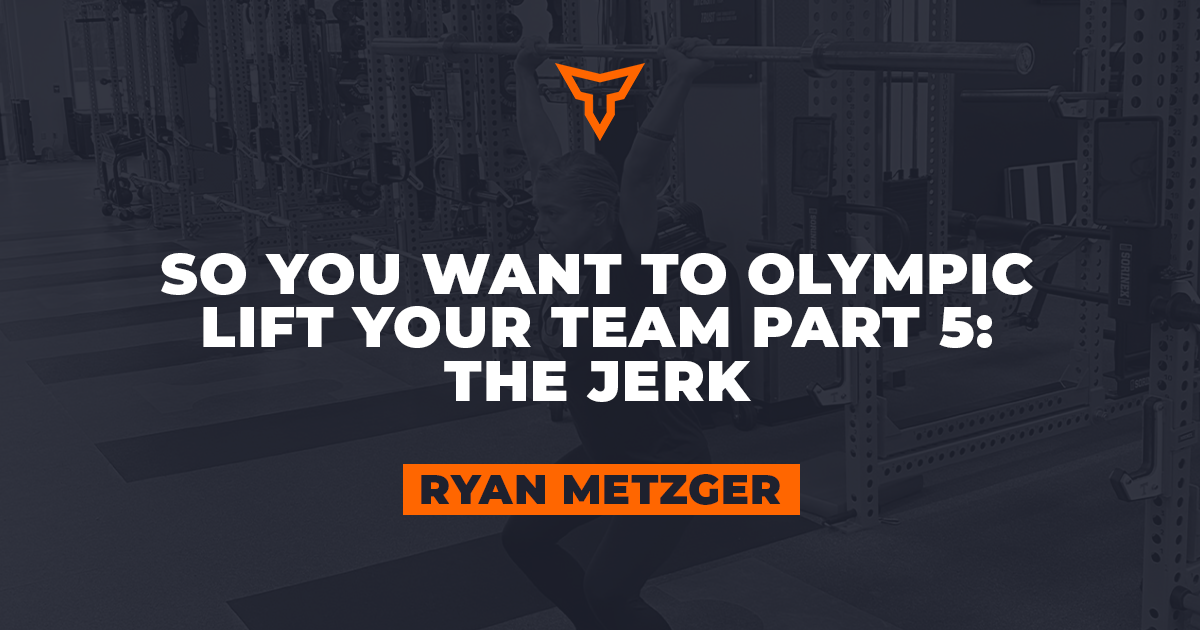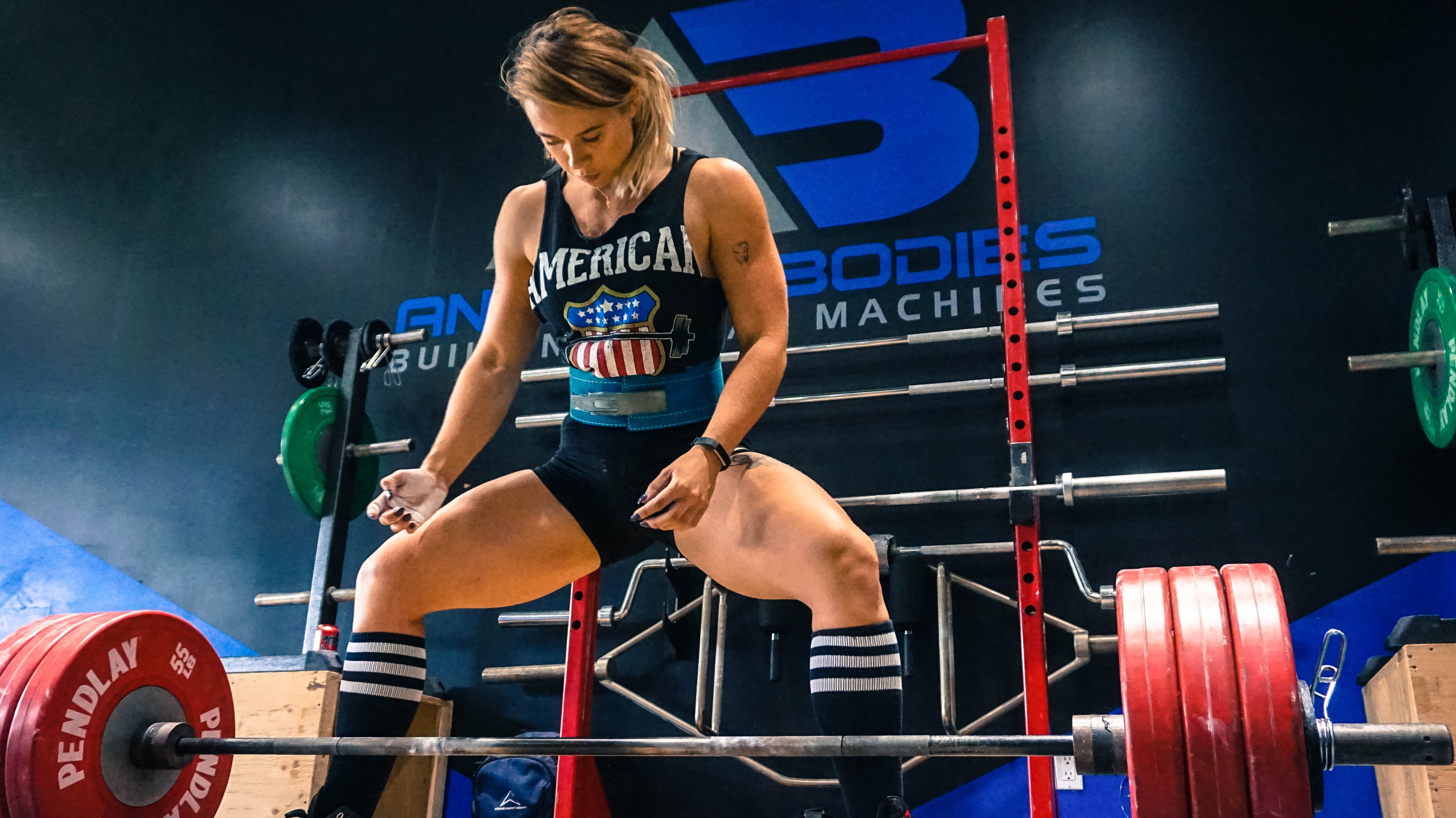Creating a System Based Approach to Your Programming
When developing a strength and conditioning program it is easy to get caught in the newest trend or see the newest modification or progression and want to implement it immediately. There are hundreds of exercise variations and it is easy to get caught up in bouncing between many different variations.
Variations within a program are good however they can also be a hindrance. When training the High School athlete, I think back to a quote from strength coach Dan John stating, “anything works but not everything works” which essentially means if you have a consistent system that you implement then high school athletes will progress, but if you bounce around between 20 different systems they may not.
I use a "system-based approach" to my programming with regards to the warm-up and strength training session. This article will break down my system and deliver you my guide to designing my programs:
The Warm-Up System
In the warm-up we follow a reset, mobility and activate approach. The reset session can consist of several options that we cycle through. Foam rolling, body tempering, ground based stretches and band stretches are many of the things we incorporate during the reset period.
Additionally, your athletes are arriving in a stressed state in many instances. Maybe they had to stay up at night with a crying brother or sister, maybe that had a late night playing fortnite whatever it maybe they often arrived stressed. It is important to take a small segment of time to allow them to decompress and focus on the session ahead. This also cuts down on the talking and distraction when in the training session. They can get this out of the way then and be locked in the rest of the training session.
The mobility approach also has many options. From various crawls, rolls, hurdle sequences, or hip/shoulder sequences and movement based stretches this is where we plug in the athlete’s mobility work grooving those movement patterns for the session ahead.
The goal of the activate approach is to get the athletes heart rate up and activate their CNS. For these we use a variety of plyometric variations, jumps, sprints and sprint mechanic drills. Our athletes go directly from their warm up into their working sets. Traditional barbell warm-ups are good if you have plenty of time but for the most part we get our athletes for 50 minutes each day so if I can cut that out and spend it elsewhere that’s what I do.
Strength Training System
In our strength training session we have a dynamic, push, pull, squat, hinge, unilateral movement and a carry in every single session. Some of these carry over in terms of a dynamic movement and can also be a hinge or pull. Rather than having a lower/upper or body part split we follow a total body approach programming the aforementioned movements in every session. This allows the coach to have variety within their exercise section while not getting lost in all the different options. I have a list of 5-8 variations of each section that way it allows for variation. If I find something new I like, I can always take out something old and add the new one in at its correct section.
In the dynamic section, we generally program our Olympic based movements and variations, or other power production movements from barbell squat jumps to trap bar jumps. Our goal in this section is to produce power and force. To do this we keep the reps limited and they are generally done in multiple sets of 2-3 repetitions, a lot of times we will not “max” in these movements but once a year.
In the pull portion, we can choose from a variety of pulls depending on the phase we are on in that cycle. One pull we always do regardless of the phase of the year is chin ups, at the high school level chin ups and pull ups are one of the most under-utilized exercise options. Obviously, chin-ups build posterior strength and upper-body strength, the biggest thing they build to me is confidence. If you have never saw an athlete finally get their first body weight chin-up after weeks of different variations and bands, it is truly a great experience to observe. Our girls go crazy for one another when they are repping chins or attempting their first chin-up's and confidence probably has the biggest carry over to sport with regards to athletic performance. A confident athlete is going to perform better on the field, court, track, bowling lane, rodeo arena or wherever their competition may take place.
One push we always do regardless of the time of year is push-ups. Again, many athletes especially in junior high cannot complete one perfect push up, so why would I bother putting them under a loaded barbell? Another push that has been great for us is the Z-Press, it is essentially an overhead press but from the floor rather than standing. This isolates the upper body and takes out a lot of the movement and momentum produced when standing.
With our senior high athletes, we do not back squat for the most part. I catch a lot of flak for this by Strength and Conditioning purist and I certainly see their point of view. However, I believe once a solid strength base is established we are better off looking at different training modalities regarding the squat. Rather it be front squat, unilateral variations such as split squat or RFE Split squat, pistol squats and various other squatting methods. While we don’t back squat with our older athletes we still do some form of squat in every workout, this generally means in offseason our athletes are squatting four days per week and in pre-season they are squatting three days per week. If a kid can back squat double his body weight I consider that "strong enough" and at that point there are more productive options in terms of their athletic development. This is the definition of being a sports performance coach.
There is some overlap in our hinge-based programming as a lot of it comes during the dynamic section so we often won’t include a hinge if we do dynamic work. Some of the hinges we do include are RDL variations, KB Swings, or good mornings. The unilateral movements often blend with our squat section such as pistol squats, Split squat variations however one we do that is strictly a unilateral balance movement is the four-corner touch. An athlete envisions themselves in a box with four corners and they are in the middle balancing on one leg. From here they go to touch each corner of the box with their hand and then come back up to balance after touching one corner and going to the other.
The last thing we include in each session is some type of weighted carry. These are great for developing total body strength and are a good developer of true core strength in terms of controlling your body when moving as to compared to controlling your body in an isolated state as you do with traditional core work. For these we use traditional farmers walk, single arm farmers walk, single arm overhead carry, and snatch grip overhead carry. When doing these program different lengths from short to long, these are also great for girl’s programs to get comfortable with heavy weight. Several of our girl’s farmers walked 90lb dumbbells in each hand this summer and it began to get them more comfortable with picking up heavy weight. They often leave realizing "Hey that wasn’t that bad I want to beat that next week, I can do just what the boys do."
Whatever your program methodology is - from conjugate to linear - it is important to have a method in terms of your exercise selection. While this may seem simple to some, it has helped us be tremendously successful in our strength and conditioning program. At the High School level it's often not what we know or can do as coaches but rather what we can get our kids to be able to do. For me that is simple foundational movements and teaching them attributes both in the weight room and in life that will carry over to later in their life rather it be 5, 15 or 20 years down the road.
Below is a sample exercise selection table that we use with our athletes, at different times of the year there are different exercises added and taken out depending on our goals but this should give you a good start:
Warm-Up Selection Table
| Reset | Activate | Mobility |
| Foam Roll | Plyo Variations | Hurdle Sequences |
| Body Tempering | Sprint Drills | Crawling Variations |
| Ground Based Stretches | OH MB Slams/Body Rips | Hip/Shoulder Mobility |
Exercise Selection Table
| Dynamic | Squat | Push | Pull | Unilateral | Hinge |
| Hang Clean | Front Squat | Push Up | Trap Bar DL | 4-Corner Touch | KB Swing |
| Clean | Back Squat | Bench Press | Chin Ups | All Single Leg Squat Variations | Suitcase Carry |
| OH MB Toss | Split Squat Variations | Incline DB Press | Inverted Pull Ups | Single Leg Landing Variations | Single Arm OH Carry |
| MB Broad Jump | RFE Split Squat Variations | SA DB Flat Bench | Head Supported Row | Farmers Walk | |
|
Barbell Squat Jump |
Goblet Squat | Resistance Push Ups | SA DB Row | Snatch Grip OH Carry | |
| Trap Bar Jump | Pistol Squat Variations | Z-Press |
Subscribe to our blog
Subscribe to receive the latest blog posts to your inbox every week.
Related posts

So You Want to Olympic Lift Your Team Part 5: The Jerk

The Best Squat Variations for Athletes with Back Issues


